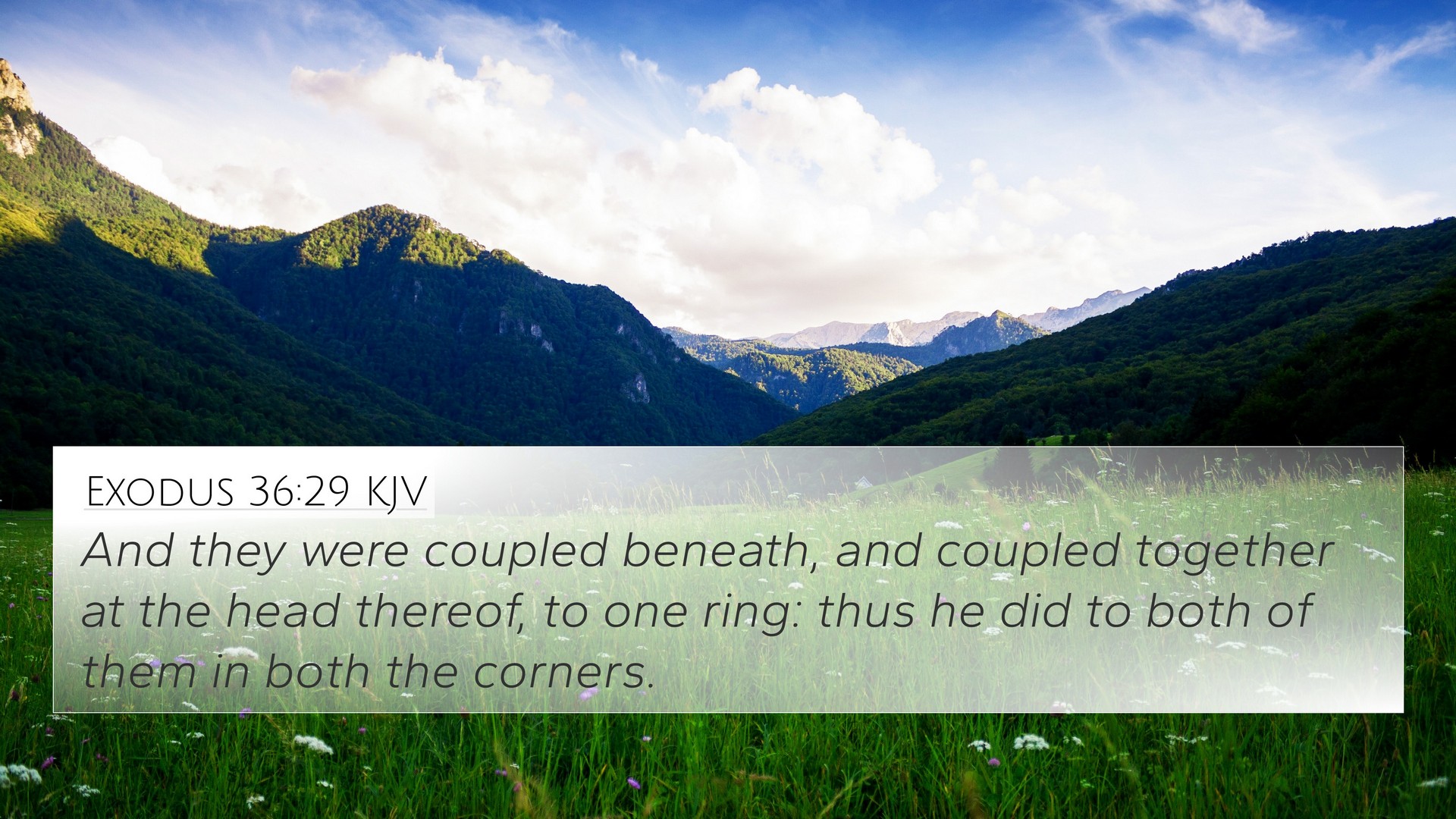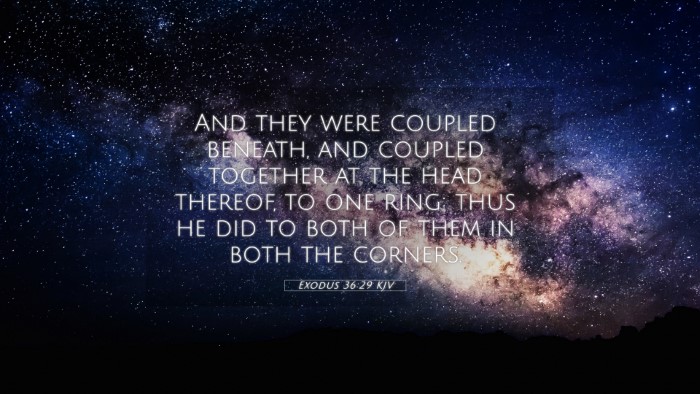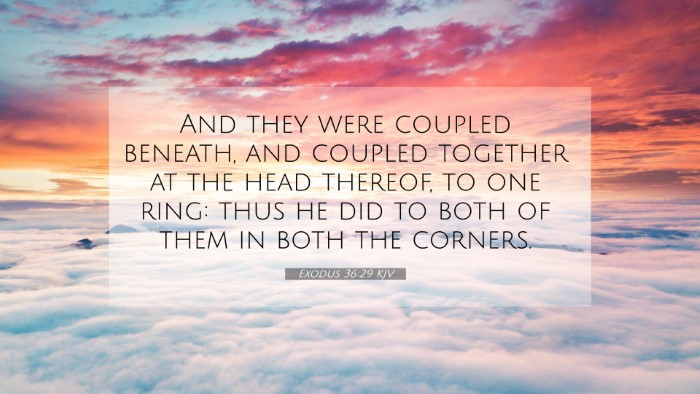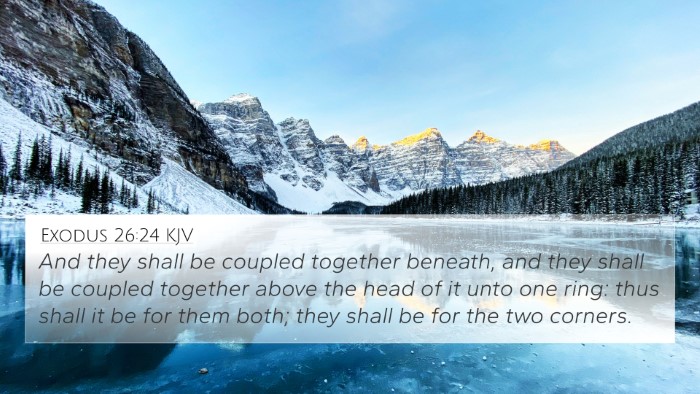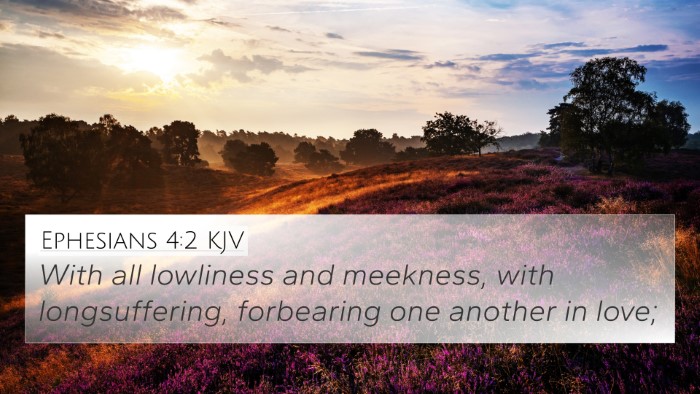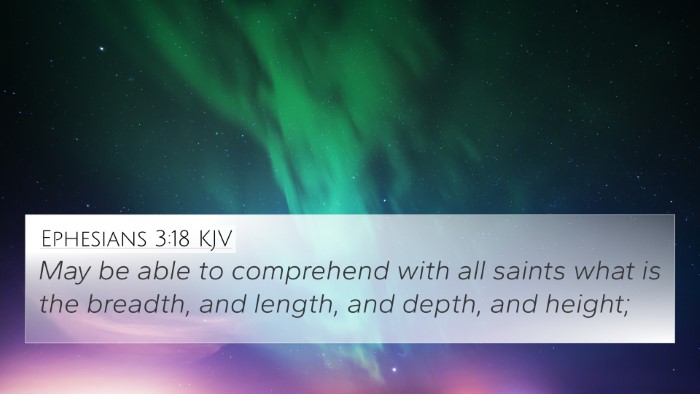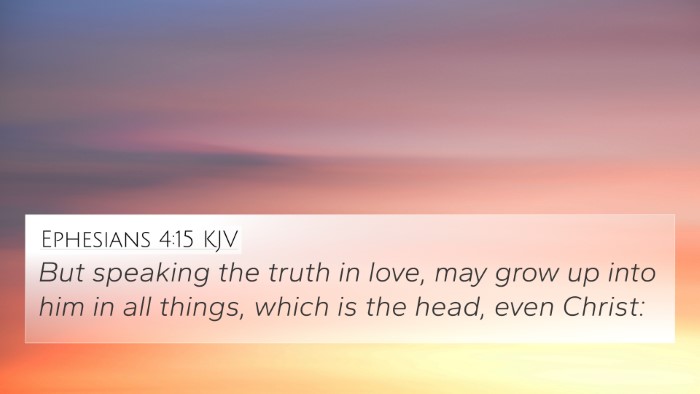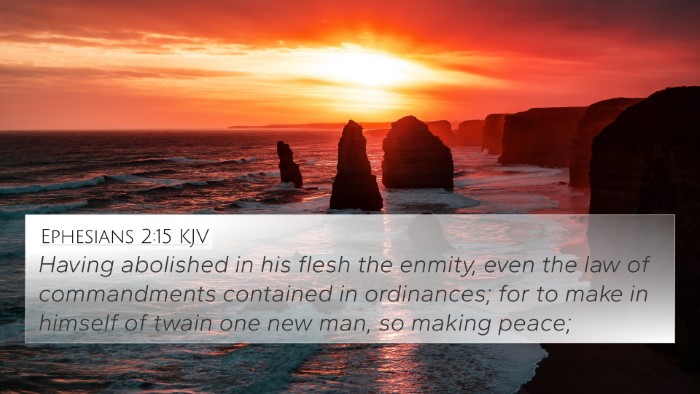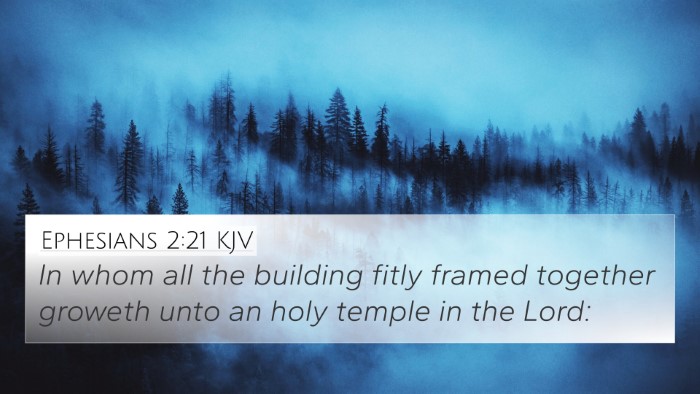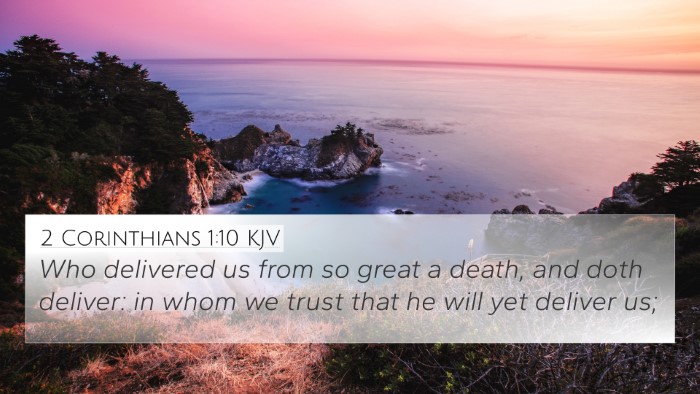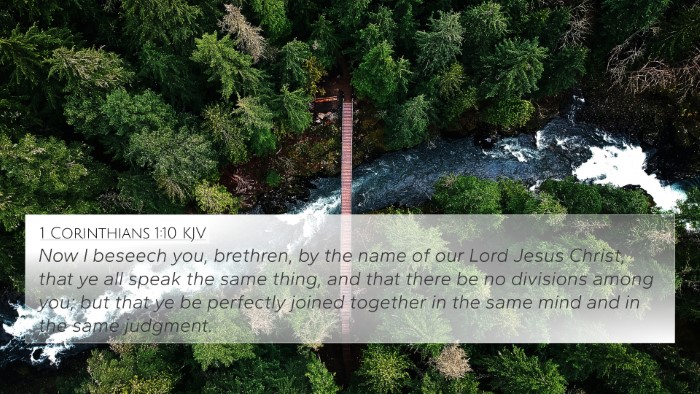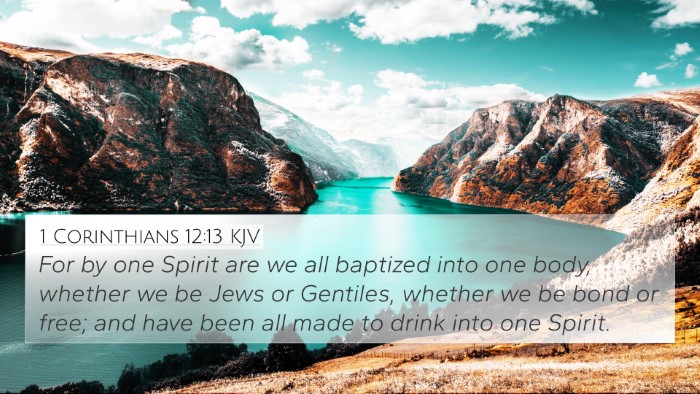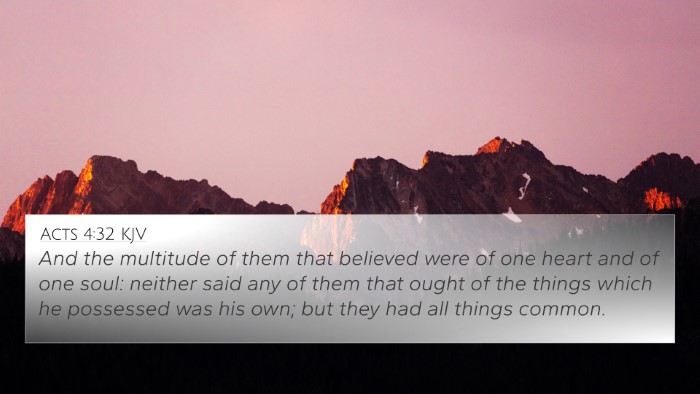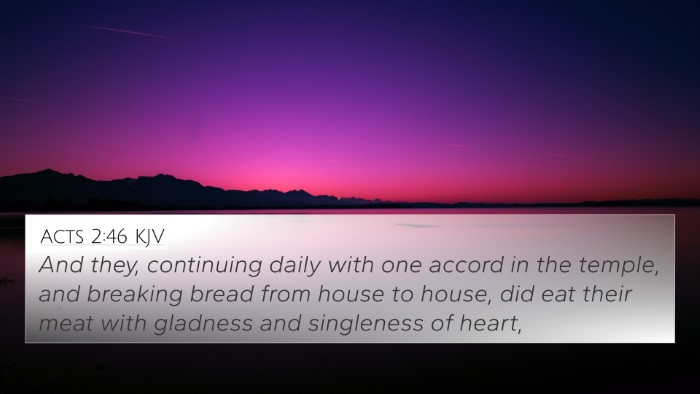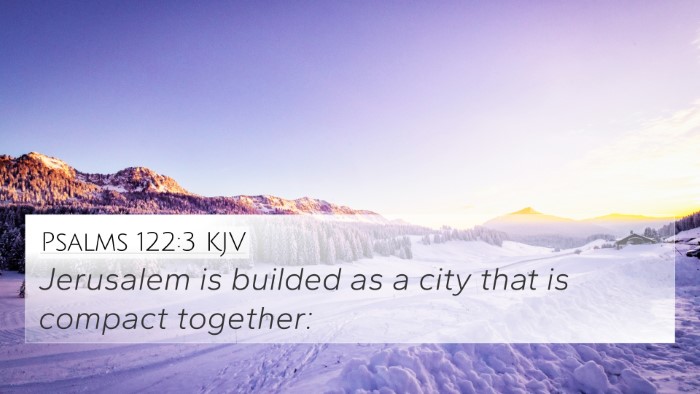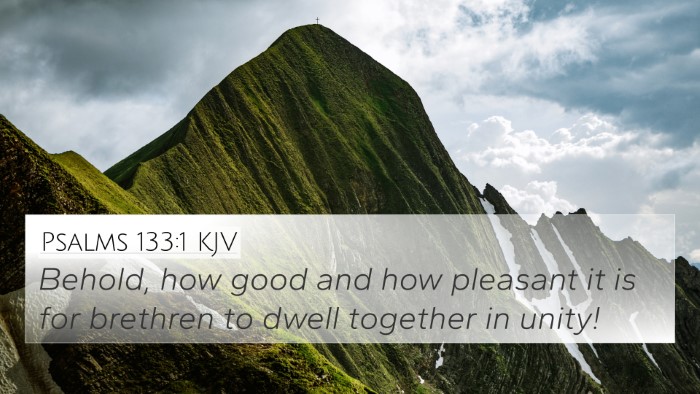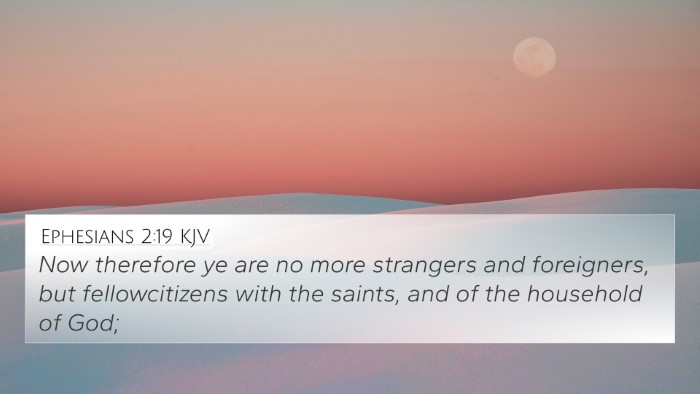Understanding Exodus 36:29
Exodus 36:29: "And he made two rings of gold for the two corners of the breastplate, upon the edge of it, which was on the side of the ephod inward." This verse highlights the detailed construction of the high priest's garments, emphasizing the significance of priestly attire in Israel's worship.
Meaning and Significance
This verse comes in the context of the intricate instructions given to Moses regarding the Tabernacle and the garments for the priests. The breastplate mentioned here was a crucial part of the high priest's attire, symbolizing the high priest's role as an intermediary between God and the people of Israel. In the commentaries, several insights can be distilled:
- Matthew Henry: He emphasizes the importance of the breastplate, noting that it represents the twelve tribes of Israel. Each stone on the breastplate corresponds to a tribe, reminding the high priest of his covenantal responsibility to bear the names of the people before God.
- Albert Barnes: Barnes comments on the significance of gold in the breastplate's construction, illustrating wealth and divinity. The presence of gold signifies purity and the preciousness of the service conducted within the Tabernacle.
- Adam Clarke: Clarke discusses the practical aspects of how the breastplate was worn and its symbolic implications regarding guidance, as the high priest sought divine will through it. The rings mentioned allow for the attachment of the breastplate to the Ephod, ensuring it remained a continuous reminder of the priest's duties.
Bible Cross References
Exodus 36:29 connects to several other passages, providing a broader understanding of its themes:
- Exodus 28:15-30: Details the design and significance of the priestly garments, particularly the breastplate.
- Leviticus 8:8: Further addresses the consecration of the high priest and the importance of the priestly attire in worship.
- Numbers 27:21: Illustrates the role of the high priest in seeking guidance from God, emphasized during decision-making processes for the Israelites.
- Hebrews 5:1: Draws parallels between the high priesthood of the Old Testament and the priesthood of Christ, indicating the continuity in the priestly role.
- Matthew 5:23-24: Although from the New Testament, this passage underscores the relational aspect of worship, echoing the importance of presenting oneself before God, akin to the high priest's offerings.
- 1 Peter 2:9: Connects believers to the priestly calling, reflecting on how they are now a royal priesthood, tasked with mediating God’s grace to the world.
- Revelation 1:6: Points to the notion of believers being made kings and priests, highlighting the continuity and fulfillment of the priestly role in Christ.
Thematic Connections
The various connections between the verses that discuss the priestly garments lead to a richer understanding of the high priest’s role in the biblical narrative. This verse specifically emphasizes the ceremonial and sacred nature of the priest's duty, serving as a representation of God's relationship with Israel and foreshadowing the ultimate high priest in Jesus Christ.
Tools for Cross-Referencing
For those looking to dive deeper into Bible cross-references and connections, here are some tools and methods:
- Bible Concordance: A resource listing biblical words and their occurrences across different verses, helping identify related scriptures.
- Bible Cross-Reference Guide: Provides a structured way to find connections between verses, facilitating deeper study.
- Cross-Reference Bible Study: Engaging with multiple scriptures concerning a single theme enhances understanding.
- Bible Reference Resources: Utilizing study Bibles that include margin notes with cross-references can illuminate connections.
- Comprehensive Bible Cross-Reference Materials: Various books and software are available for a detailed exploration of scriptural connections.
Conclusion
Exodus 36:29 serves not only as a description of the high priest's attire but also opens a window into understanding the broader themes of mediatorship, worship, and the sacredness of God's presence. Analyzing this verse within the context of related scriptures encourages a deeper appreciation for the role of the priest in the Old Testament and its fulfillment in the New Testament through Christ.
